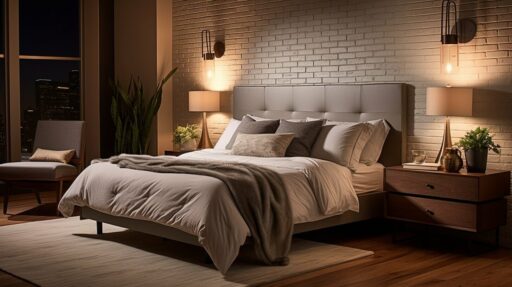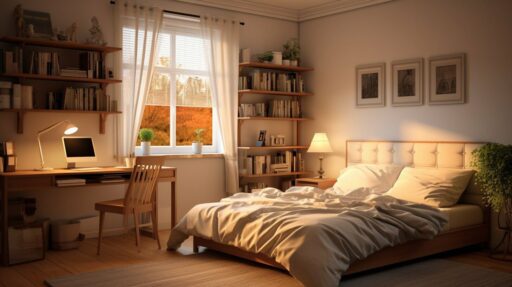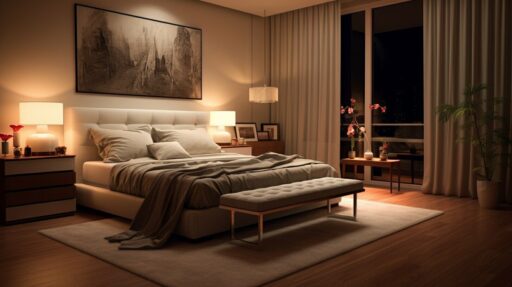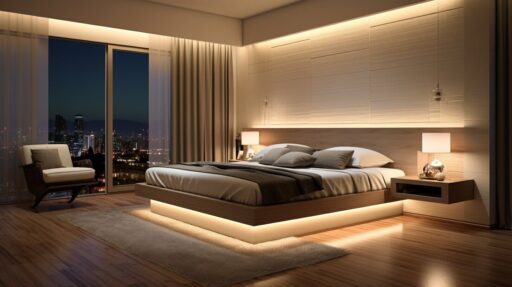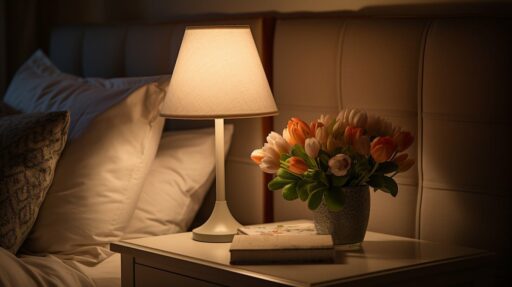Best Sofa Bed for Guest Room (Updated 2025): Durable, Cozy & Space-Savvy
If you’re hunting for the best sofa bed for guest room comfort, this friendly guide covers sizes, mattress types, and smart layouts—plus daybeds and small-space tricks that look luxe without the stress.
Updated 2025 with compact layouts, easy-care fabrics, and quick measuring tips.
Below, you’ll find the best sofa bed for guest room setups that actually fit and feel great.
Pick a sleeper that fits your room’s flow first—then layer bedding for boutique-level comfort. For the full hosting blueprint, see our guest bedroom ideas guide.
Key Takeaways
- Best sofa bed for guest room success starts with measurements—width, pull-out depth, and walking paths.
- Choose the mattress type (foam, innerspring, or hybrid) that matches your guests’ preferences.
- Daybeds and loveseats shine in tiny rooms; sectionals with sleepers work in multipurpose living spaces.
- Easy-care upholstery and removable covers simplify maintenance between stays.
- Pair your sleeper with breathable layers from our best bedding for guest room guide.
How to choose the right sleeper for your space
Start with the room’s footprint and the path guests take when the bed is open. Measure the sofa length, the pull-out depth, and the space left for walking. If you host often, prioritize a smooth, squeak-free mechanism and supportive sleep surface. This helps you choose the best sofa bed for guest room layouts without blocking doors.
Mini-scenario: Your office-guest room is 10×11 feet. A full-size loveseat sleeper leaves a walkway to the closet; a queen blocks the door. The loveseat wins—and looks tailored day to day.
Working in tight quarters? Combine these tips with small guest room ideas and our guest room essentials checklist for stress-free prep.
Best sofa bed for guest room: mattress & mechanism basics
The sleep surface matters more than cushions—especially if you want the best sofa bed for guest room comfort. Here’s what to consider so guests actually sleep well.
Foam mattresses
- Consistent support with fewer bars or pressure points from the frame.
- Great for quick setups; often lighter to pull out.
Innerspring mattresses
- Traditional bounce; some models feel firmer and cooler.
- Check for a quality support deck so springs don’t telegraph through.
Hybrid & toppers
- Foam + coil blends can balance contour and airflow.
- A 2–3″ topper (stored under the sofa) upgrades any sleeper instantly.
Bonus comfort: Build a simple layer set from the best bedding for guest room guide—percale or linen sheets + medium-weight duvet.
According to the Sleep Foundation, most adults need at least seven hours of sleep each night—so a supportive sleeper can make a real difference for overnight guests. When shopping, look for models with modern support decks and consider verified materials. A quick way to decode labels is to check a mattress and bedding certifications guide.
Quick size guide & measuring checklist
Match sleeper size to the way your room actually functions.
- Twin/Chair Sleeper (30–39″ wide): Perfect for studio nooks or offices; minimal pull-out depth.
- Full/Loveseat Sleeper (52–60″ wide): Cozy for couples or ideal for solo guests with extra sprawl.
- Queen Sleeper (60–66″ wide): Hotel-like feel; confirm pull-out depth (often 85–92″ total).
- Sectional Sleeper: Great for multipurpose family rooms—check chaise clearance and traffic flow.
These ranges make picking the best sofa bed for guest room dimensions simple.
Measure twice: doorways, hall turns, elevator size, pull-out depth, and the leftover path to closets or the bathroom.
Top picks by room type (9 ideas)
Use these scenarios to match your layout with the sleeper style that will serve you best—day and night—so you can choose the best sofa bed for guest room without guesswork.
1–2) Tiny office or studio: loveseat sleeper or daybed
- Loveseat sleeper: Full-size comfort, compact by day, minimal pull-out depth.
- Daybed + trundle: Reads like a bench; trundle adds occasional +1 capacity.

3–4) Narrow guest room: twin chair sleeper or click-clack futon
- Twin/Chair sleeper: Folds out fast; great when floor space is at a premium.
- Click-clack futon: Back drops flat; no pull-out clearance needed.


5–6) Family room hybrid: queen sleeper or sectional with chaise
- Queen sleeper: Feels like a “real bed” for couples—measure for traffic flow.
- Sectional sleeper: Seats a crowd daily; converts for holidays and long weekends.

7–8) Storage-savvy spaces: lift-top ottoman + topper or storage sofa bed
- Ottoman + topper combo: Hide a 2–3″ topper and linens inside for instant comfort.
- Storage sofa bed: Built-in drawer keeps bedding handy—great for small homes.
9) Design-first rooms: upholstered daybed with luxe pillows
- Dress a daybed in textured neutrals and one accent color; add a bolster for daytime lounging.
Sofa bed vs daybed vs futon: quick comparison
| Feature | Sofa Bed | Daybed | Futon |
|---|---|---|---|
| Best for | Multipurpose living rooms; frequent hosting | Guest nooks & offices; relaxed styling | Ultra-small rooms; quick conversions |
| Sleep feel | Mattress (foam/innerspring/hybrid) | Standard twin mattress (add trundle) | Firm, single-surface cushion |
| Space needs | Requires pull-out depth clearance | No unfold; trundle clearance only | No pull-out; back drops flat |
| Daily look | Reads as a sofa | Reads as a lounge bench | Casual, minimalist |
| Setup speed | Moderate | Fast | Fast |
Upholstery, care, and cozy upgrades
Choose fabrics that clean easily and look polished after a quick refresh.
- Performance fabrics: Stain-resistant weaves are ideal for busy rooms.
- Removable covers: Zip-off cushion covers make laundry days painless.
- Color palette: Calm neutrals + a single accent make styling effortless.
- Bedding add-ons: Keep a topper and spare linens in a storage ottoman.
For a five-minute pre-arrival routine—water carafe, chargers, and towels—see our guest room essentials checklist. If you’re polishing your space on a shoestring, peek at guest bedroom on a budget for high-impact, low-cost upgrades.
For frequent hosts, prioritize spinal support: the American Academy of Sleep Medicine recommends consistent sleep schedules and comfort-forward setups—your sleeper’s mattress quality and pillow options matter more than flashy features.
Best sofa bed for guest room: quick setup checklist
Use this bite-size list before every stay so your sleeper feels truly guest-ready.
- Measure pull-out depth and leave a clear path to the bathroom.
- Layer breathable sheets + a medium-weight duvet (or quilt + throw).
- Offer two pillow types: one soft, one medium/firm.
- Stage a rolling cart or ledge shelf for lamp, water, tissues, and charger.
- Place a sleep mask on the pillow if blackout isn’t possible.
Want the full hosting roadmap? Start with our pillar guide: How to Create the Perfect Guest Bedroom: A Host’s Checklist.
FAQ
What size is best for a small office-guest room?
A full-size loveseat sleeper or a daybed with trundle usually fits best while keeping walkways open—often the best sofa bed for guest room combos.
How do I make a sleeper feel like a real bed?
Add a 2–3″ topper, breathable sheets, and two pillow firmness options. Finish with a medium-weight duvet or quilt.
Is a futon okay for adult guests?
Yes—choose a sturdier frame and pair it with a topper for extra comfort, especially for side sleepers.
What about maintenance between stays?
Air out cushions, launder sheets and covers, and keep a lint roller plus fabric refresher in a basket nearby.
Daybed or sofa bed for frequent hosting?
If you host couples often, pick a queen sofa bed. If most guests are solo, a daybed with trundle is simpler and space-friendly.
Conclusion
The best sofa bed for guest room balances footprint, sleep quality, and daily life. Measure first, choose the right mattress type, and layer breathable bedding. With a few cozy upgrades, your multipurpose room will feel effortless to use—and delightful to stay in. Explore more cozy how-tos in Cozy Bed Quarters.
Related reading from Cozy Bed Quarters
- How to Create the Perfect Guest Bedroom: A Host’s Checklist
- How to Set Up a Guest Room in a Small Space (Even an Office)
- The Best Bedding for a Guest Room: Durable, Comfortable & Easy





